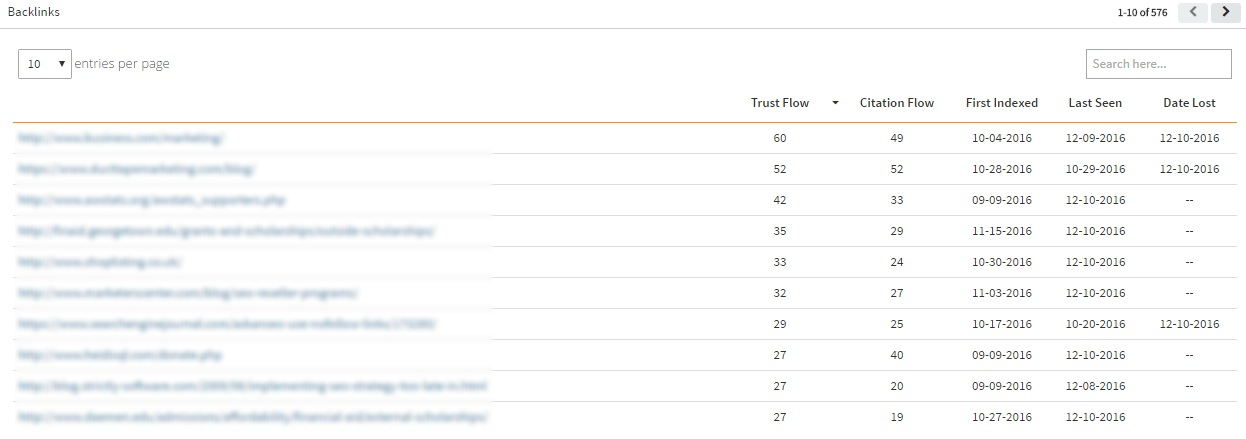
- The Importance Of Rank Tracking Local Keywords In 2018 - June 5, 2018
- How to Spot Opportunities from your Competitors’ Backlinks - July 19, 2017
- Why You Should Monitor Your Brand Daily - May 26, 2017

If there is one word that best describes SEO, the right word is “dynamic.” Google routinely changes up its search algorithms, redefining the digital marketing landscape with every single rollout. Throughout the years, link building has been one of the most altered aspects of SEO – all because of its importance in the craft.
For the uninitiated, link building is the acquisition of hyperlinks from other websites that point to your own. Its significance for search engines is in the fact that the number, the type, and the quality of links that point to a certain website serves as a key factor in determining rankings in the search engine results pages (SERPs). Moz has published a comprehensive guide that details further its importance and Digital Search Group has another good read about quality vs quantity in link building.
The Early History
Link building has a rather chaotic history. In its early days, marketers bombarded search engines with links that point to their respective websites without any thought of the relevance of the link to the content. The links were simply inserted into pieces of content with the sole purpose of driving traffic.
Link exchanges, email link requests, and directory submissions used to be the top practices. Then came blog commenting, blogroll linking, and article submission. Guest blogging, link networks, press releases, and blog networks also entered the picture at some point in time.
Back then, these tactics worked, because search engines viewed the quantity of links as one of the strongest ranking factors – but not anymore. Today, most of these practices are dead and no longer play a role in establishing credibility and gaining impressive rankings in the SERPs.
The Evolution of Algorithms
With the dynamism of the search landscape, strategies require more flexibility if you want to rank and ensure your site follows Google’s quality guidelines. Google Webmaster Trends Analyst Gary Illyes and Software Engineer Paul Haahr explain how the search landscape is changing today, especially when it comes to ranking and algorithms:
Link building transformed the SEO landscape the most in 2012, when Google announced the rollout of Penguin. This particular algorithm update focused on weeding out spammy links as well as penalizing websites that have inflated SERP rankings through manipulative practices. Thousands of websites took a hit with this update and changed link building for good.
What is interesting about Penguin is the paradigm shift it brought when it comes to boosting rankings. It put focus on earning links organically, rather than building them. No longer does every single link count, because Penguin filters these links and ensures that each is relevant to the content it is associated with.
Two more major algorithm updates pushed further the evolution of link building. First of which is Panda, an update that puts more premium on quality content – and, in effect, links that are more relevant and are of better quality. The second update is Hummingbird, which made Google smarter by using semantics. This shifted the focus from finding exact matches for search queries to analyzing the meaning of the queries and showing more accurate and more appropriate results.
All of these algorithm updates aim to improve the user experience, to make the process of searching for information more intuitive. The effects of the two latter algorithms may not be as direct as Penguin’s, but these certainly did change the way marketers approach link building and SEO in general.
The Adaptation Strategies
It is clear that the search giant strives for one thing: quality.
It is clear that the search giant strives for one thing: quality. Be it in terms of SERP entries, content guidelines, or link portfolios, Google wants to provide the best quality search experience for all its users. The end goal is to provide a set of results that answers every search query as accurately as possible. As such, link building and SEO strategies have to align with this objective.
One of the most viable strategies is to develop content that is fresh and relevant to every reader. Insert links that are related to the content and that add value to the information the reader is looking for. Always strive to enrich the user experience, especially with content. Great pieces of content are likely to get shared in social networks, drive more traffic, and earn site owners quality backlinks.
Link reclamation is also a viable strategy moving forward. This covers locating and fixing erroneous links. In turn, the process cleans up a website’s link portfolio and makes it more trustworthy in the proverbial eyes of search engines. It is also a great way to keep the content relevant to end users by ensuring all resource links are working properly.
Most importantly, use analytics that track the link building campaign as closely as possible. SEO practices can and should be measured. Regardless of the strategy you decide to implement, knowing your gains from it is invaluable. These tools, analytics, and reports are all important in gauging what works and what doesn’t — and this is why we have Siteoscope.

Siteoscope Backlinks Breakdown and Anchor Text Analysis
Siteoscope provides you with the key metrics to tap into your backlinks. The dashboard features a breakdown of your backlinks stats and the number of indexed URLs. This provides you with a tool to compare stats from competitors and your site’s current data, so you can adjust your strategy accordingly and ensure your site is in a great spot.

Link building in SEO is an ever-changing game. It is absolutely necessary for any site owner to know what strategies to implement and what practices to tweak. Only when the general game plan is adaptable to this continuous evolution can websites gain higher rankings and maintain commanding positions in the SERPs.
